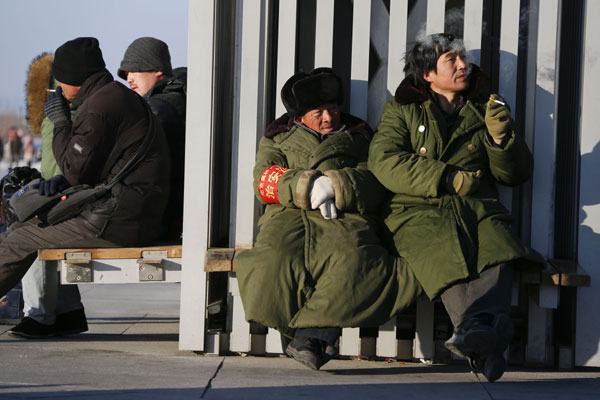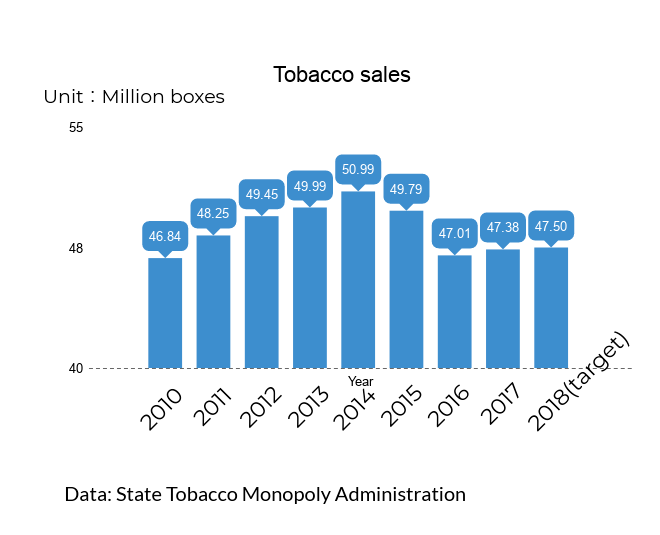Plan to raise tobacco sales criticized


China's national tobacco regulator's plan to increase sales has been criticized as going against the trend of tobacco control.
The State Tobacco Monopoly Administration, the national regulatory body of tobacco industry, and China National Tobacco Corp, a company it runs, set a target of 47.5 million boxes of cigarettes to be sold by the end of the year at an interior meeting this month, according to a report from Science and Technology Daily. That marks an increase of 122,000 boxes, or 6.1 billion cigarettes, from last year.
Experts criticized the target as going against the trend of tobacco control in the world's largest tobacco consumer and producer.
Zhi Xiuyi, the deputy head of the Chinese Association of Tobacco Control, told China Youth Daily: "There is no doubt that smoking is harmful to people's health, a fact the STMA should be well aware of."
"However, it insists on increasing the sales volume of tobacco and enlarging smoking population, which will hamper the realization of targets proposed in the Healthy China 2030 plan," he said.
Healthy China 2030, a national blueprint on improving people's health, aims to cut down the proportion of smokers in the Chinese population from 27 to 20 percent by 2030.
As world's largest producer and consumer of cigarettes, China has 315 million smokers, accounting for 30 percent of world's smoking population.
In a step toward creating a healthier environment, China has adopted a series of measures to reduce smoking in public spaces.
The country's advertisement law, formulated in 1994, banned tobacco advertisements in public media such as TV and radio, and public areas including sports venues and theaters.
China ratified the World Health Organization Framework Convention on Tobacco Control in 2003, which came into effect in 2006.
The convention requires contracting parties to ban smoking in public spaces, reduce tobacco supplies and consumption, ban tobacco advertising and raise taxes.
Starting in 2014, officials are not allowed to smoke in public areas.
Besides, 18 cities have also adopted tobacco control regulations.
Beijing, for example, smoking is banned in all indoor public areas and workplaces starting in 2015. After three years, the smoking population of the city has dropped by around 4 percent, according to a Beijing Youth Daily report.

Due to tobacco control measures and a heightened awareness of the harm of smoking, sales volume of cigarettes started dropping since reaching its peak in 2014 after growing annually for two decades.
But the sales volume in 2017 bounced back and is expected to rise again this year, said Li Jinkui, a health expert.
He said profit is behind the higher sales targets.
"To resolve the contradiction between tobacco sales and the social context of tobacco control, we should reduce supply and consumption of tobacco as required by the WHO Framework Convention on Tobacco Control," Li was quoted as saying by the Science and Technology Daily.
- Zhangjiajie National Forest Park welcomes its first snow
- Revelers celebrate New Year's Eve in Beijing
- Communist Party expels former senior Dalian official
- Yunnan rose named after uncle 'who looks like a flower'
- Changsha becomes fourth city to host Chinese-built C919 jet
- Xi delivers 2026 New Year message



































